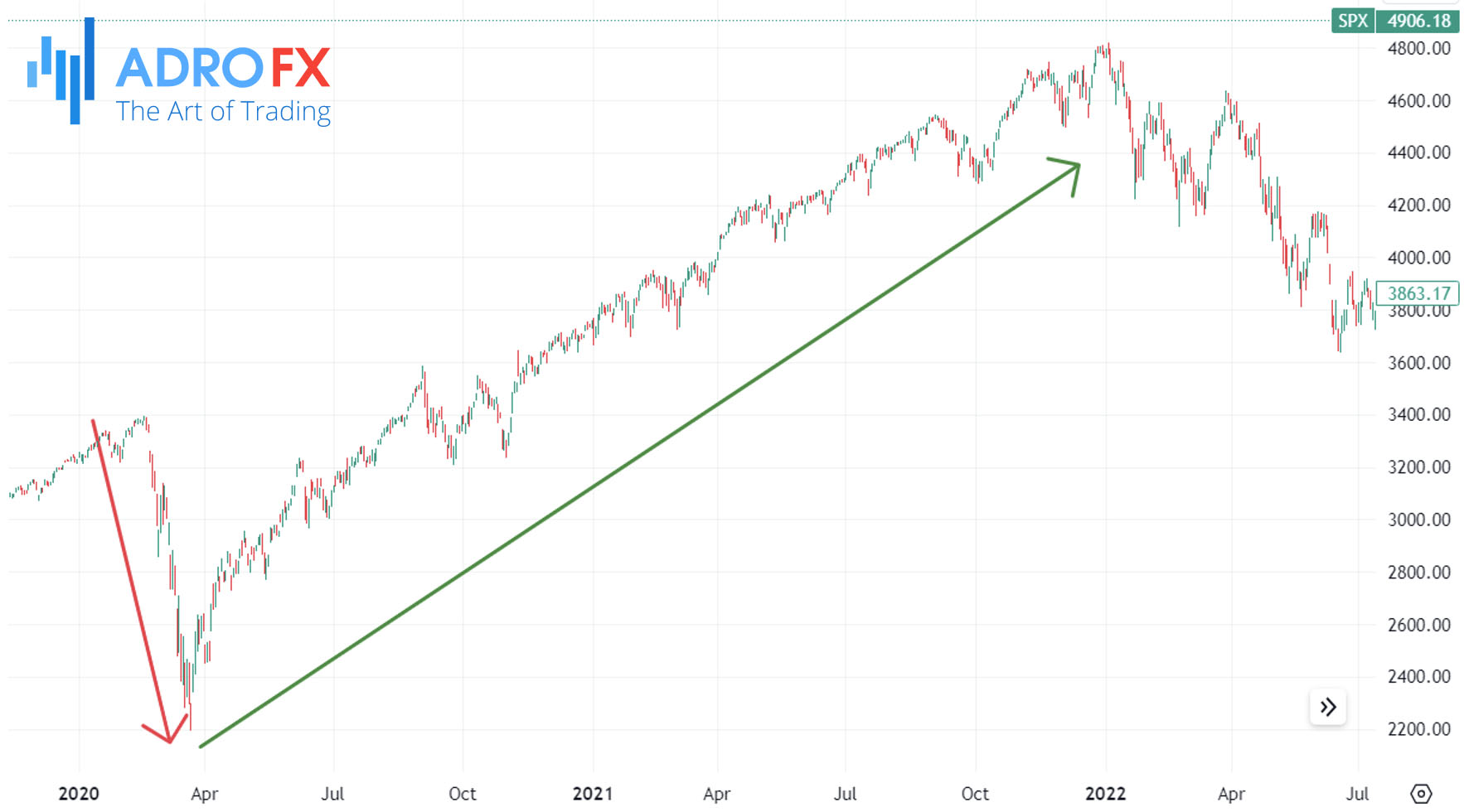Dip Buying Mastery: A Strategic Approach to Capitalizing on Market Dynamics

The Buy the Dip strategy transcends mere reaction to short-term price declines; it embodies a comprehensive mindset of opportunistic investing. Rooted in the belief that market fluctuations, especially downward movements, are intrinsic to the financial landscape, this strategy represents a broader investment philosophy. At its core, it reflects the conviction that quality assets, be it stocks or cryptocurrencies, will encounter occasional setbacks in their upward trajectory. Investors embracing the Buy the Dip philosophy view these setbacks as moments of opportunity, perceiving market reactions, external shocks, or temporary adversities as chances to acquire more favorable-priced assets. This article explores the nuanced aspects of the Buy the Dip strategy, delving into its core principles, requisite understanding, and the importance of emotional resilience in navigating the complexities of market dynamics.
What Is the Buy the Dip Strategy?
The Buy the Dip strategy is a market approach that goes beyond merely taking advantage of short-term price declines. It embodies a mindset of opportunistic investing, rooted in the belief that market fluctuations, particularly downward movements, are inherent in the financial landscape.
At its core, this strategy reflects the conviction that quality assets, such as stocks or cryptocurrencies, will experience occasional setbacks in their upward trajectory. Investors following the Buy the Dip philosophy see these setbacks as moments of market overreaction, external shocks, or temporary adverse events that create an opportunity to acquire assets at a more favorable price.

The strategy requires a keen understanding of the market's broader trends and the ability to distinguish between a temporary dip and a more prolonged downturn. Investors utilizing this strategy often conduct thorough fundamental analysis to ensure the underlying health and potential for growth of the asset in question.
Emotional resilience and discipline are crucial aspects of the Buy the Dip strategy. It requires investors to resist the temptation to panic sell during market downturns and, instead, seize the opportunity to buy assets at a perceived discount. Successful implementation of this strategy also involves monitoring macroeconomic factors, news, and market sentiment to gauge the likelihood of a genuine recovery.
While the Buy the Dip strategy can be lucrative when executed judiciously, it is not foolproof. Investors must carefully assess risk factors, including the potential for extended market declines or unforeseen events that could impact the asset's value. Additionally, this strategy may not suit short-term traders, as it is more aligned with a long-term investment perspective.
In summary, the Buy the Dip strategy is more than a tactical response to short-term price declines; it represents a broader investment philosophy that embraces market volatility as an opportunity for strategic asset accumulation.
How to Use the Buy the Dip Strategy
To effectively employ the Buy the Dip strategy, investors must adopt a comprehensive and disciplined approach. The strategy involves capitalizing on temporary market declines by strategically entering positions in assets with the anticipation of a subsequent rebound.
Firstly, investors need to have a clear understanding of the broader market trends and the specific assets they are considering. This requires thorough research and analysis to identify the fundamental strength and growth potential of the assets.
Timing is critical in implementing the Buy the Dip strategy. Investors should develop the ability to differentiate between a short-term dip and a more sustained downtrend. This involves monitoring market indicators, news, and events that may influence asset prices.
Emotional resilience is paramount. The strategy requires investors to remain calm and disciplined during market downturns, avoiding impulsive reactions to short-term price fluctuations. It's essential to focus on the long-term potential of the assets rather than succumbing to panic selling.
Risk management is a key component of the strategy. Investors should carefully assess the potential downside risks and set realistic expectations for the recovery of the asset. This involves considering factors such as the overall market conditions, economic indicators, and any external events that may impact the asset.
Diversification is advisable to mitigate risk. By spreading investments across different assets or sectors, investors can reduce the impact of a downturn in any single area of their portfolio.
Continuous monitoring of market conditions is crucial. Investors need to stay informed about changes in economic conditions, industry trends, and any developments that may affect the assets in their portfolios. This ongoing assessment helps in making informed decisions about when to enter or exit positions.
Overall, the successful application of the Buy the Dip strategy requires a combination of market knowledge, emotional discipline, and a long-term perspective. By strategically entering positions during market dips and having confidence in the potential for recovery, investors can leverage temporary downturns to enhance their overall investment performance.

How to Identify Stocks to Buy the Dip
Identifying stocks for the Buy the Dip strategy involves a thorough analysis of the market, individual stocks, and overall economic conditions. Here's a holistic approach to help investors pinpoint stocks suitable for this strategy:
- Fundamental Analysis
Start with a comprehensive analysis of a company's fundamentals. Assess key financial metrics such as revenue, earnings, debt levels, and growth prospects. Look for companies with strong fundamentals that indicate long-term stability and potential for recovery.
- Industry Trends
Consider the broader trends within the industry to which the stock belongs. A company operating in a resilient or growing industry may have better prospects for recovery after the dip.
- Market Sentiment
Monitor market sentiment and news. Negative sentiment or short-term disruptions can lead to stock price declines. Evaluate whether the dip is driven by temporary factors or systemic issues affecting the company.
- Historical Performance
Examine the stock's historical performance during market downturns. Some stocks may have a track record of rebounding strongly after temporary setbacks, making them suitable candidates for the Buy the Dip strategy.
- Economic Indicators
Assess macroeconomic indicators that may impact the stock and industry. Economic conditions can influence the overall market and specific sectors, affecting stock prices.
- Dividend History
Stocks with a history of paying dividends can be attractive for long-term investors. Look for companies with a consistent dividend track record and the financial strength to maintain or increase dividend payouts.
- Valuation Metrics
Evaluate valuation metrics such as price-to-earnings ratio (P/E), price-to-book ratio (P/B), and dividend yield. A stock trading at a discount relative to its historical averages or industry peers may present a buying opportunity.
- Management and Governance
Examine the quality of company management and corporate governance practices. Companies with strong leadership and transparent governance structures may be better positioned to navigate challenges and recover from the dips.
- Technological and Innovation Trends
Consider the company's position in technological and innovation trends. Companies that are adapting to technological changes and industry disruptions may have a competitive edge in the long run.
- Diversification
Diversify your portfolio to spread risk across different sectors and industries. This can help mitigate the impact of the dip in any single stock or sector on the overall portfolio.
By combining these factors, investors can identify stocks with the potential for recovery after the dip. However, it's crucial to conduct ongoing research, stay informed about market conditions, and reassess investment decisions as circumstances evolve. The Buy the Dip strategy requires a disciplined and patient approach to capitalize on opportunities created by market fluctuations.

How to Understand How Long the Dip Lasts
Understanding how long the dip in stock prices will last involves a multifaceted analysis that considers various factors influencing the market and individual stocks. Here's a narrative approach to comprehend the duration of a dip:
Market Conditions:
Begin by assessing the broader market conditions. Macroeconomic factors, geopolitical events, or overall market sentiment may influence the dip. Analyze economic indicators, central bank policies, and global trends that may impact market stability.
Company-Specific Factors:
Examine the factors specific to the companies experiencing the dip. Company earnings reports, financial health, and strategic developments can provide insights into the underlying reasons for the dip. A temporary setback may have a different recovery timeline than challenges rooted in long-term issues.
Industry Trends:
Consider the trends within the industry to which the affected stocks belong. Industries experiencing cyclical downturns may witness shorter-lived dips, while structural or systemic issues could lead to more prolonged challenges.
Investor Sentiment:
Evaluate investor sentiment and reactions to the dip. If the dip is driven by panic selling or irrational behavior, it may be shorter-lived as markets tend to correct overreactions. On the other hand, the dip based on fundamental concerns may take longer to recover.
Historical Performance:
Examine historical performance patterns of both the broader market and the specific stocks in question. Stocks that have a history of quick recoveries after similar dips may suggest a shorter duration for the current downturn.
Market Liquidity:
Assess the liquidity of the market and individual stocks. Higher liquidity often facilitates quicker price adjustments, while lower liquidity may lead to more prolonged dips as buyers and sellers face challenges in executing trades.
External Events:
Consider external events that could impact the duration of the dip. Regulatory changes, geopolitical tensions, or unforeseen events can introduce uncertainties that influence how quickly markets and stocks recover.
Analyst Assessments:
Review assessments from financial analysts and experts. Analyst reports and market commentaries can provide valuable perspectives on the potential duration of the dip based on their analyses of the market and stock-specific factors.
Note that predicting the exact duration of the dip is inherently challenging, and unforeseen events can influence outcomes. Investors should maintain a flexible and adaptive approach, continuously monitoring market conditions and adjusting their strategies based on new information and developments. Additionally, diversification and risk management practices can help investors navigate uncertain periods and mitigate potential losses during market downturns.

Risks of Buying the Dip
Buying the dip in stocks can be a strategy to capitalize on short-term market downturns, but it comes with inherent risks that investors should carefully consider:
- Continued Downward Trend
The dip may be a precursor to a more prolonged downward trend. Buying too early in a declining market could lead to further losses if the negative momentum persists.
- Lack of Reversal
The dip may not reverse as quickly as anticipated. Factors driving the decline may persist, delaying a recovery and prolonging the period of unrealized losses.
- Fundamental Issues
The dip may result from fundamental issues within the company or broader market. Ignoring underlying problems could lead to sustained declines in stock value.
- Market Volatility
Volatility can amplify losses or trigger additional sell-offs. Rapid price fluctuations may create challenges for investors to accurately time their entry and exit points.
- Overleveraging
Using excessive leverage to buy the dip can magnify losses. If the market downturn persists, leveraged positions may face margin calls, leading to forced selling.
- Psychological Impact
Emotional reactions to market fluctuations can cloud judgment. Panic selling or impulsive buying decisions may result in suboptimal outcomes.
- Unforeseen Events
Unexpected events, such as geopolitical tensions, natural disasters, or economic shocks, can disrupt markets and invalidate predictions about the duration of the dip.
- Market Timing Challenges
Accurately timing the market bottom is challenging. Investors may buy the dip prematurely or miss opportunities for profit if they wait too long.
- Company-Specific Risks
Individual stocks may face company-specific risks, such as management issues, regulatory challenges, or competitive pressures, which may not be immediately apparent during a dip.
- Liquidity Constraints
In less liquid markets, executing buy orders during the dip may be challenging. Illiquidity can result in delayed trades and unfavorable prices.
- False Recovery Signals
Temporary rebounds during the dip may create false signals of a recovery. Investors may mistake short-term price fluctuations for a sustainable upward trend.
- Market Sentiment Shifts
Rapid shifts in market sentiment can occur, impacting the effectiveness of the Buy the Dip strategy. Changes in investor sentiment may lead to abrupt market movements.
To mitigate these risks, investors should conduct thorough research, diversify their portfolios, and implement risk management strategies. Additionally, having a clear investment plan, maintaining a long-term perspective, and staying informed about market developments can contribute to more informed decision-making when considering the Buy the Dip strategy.
Conclusion
In conclusion, the Buy the Dip strategy is not just a reactive response to short-term market fluctuations; it embodies a comprehensive investment philosophy that views market volatility as an avenue for strategic asset accumulation. As we delve into the intricacies of this approach, understanding its nuances, conducting thorough research, and maintaining emotional discipline emerge as paramount aspects.
Labeling this section as the conclusion, let's recap the key takeaways. Success with the Buy the Dip strategy hinges on a disciplined approach, combining market knowledge, emotional resilience, and a steadfast long-term perspective. The potential rewards of judiciously executed Buy the Dip strategies are evident, yet it's crucial to acknowledge the inherent risks.
Therefore, as investors embark on implementing this strategy, the narrative of investment wisdom unfolds. By summarizing the significance of these principles, we reinforce the core message: navigating market fluctuations requires a strategic mindset, and the Buy the Dip strategy, when approached with prudence, provides not only a tactical advantage but also aligns with broader investment wisdom in the dynamic landscape of financial markets.
About AdroFx
Established in 2018, AdroFx is known for its high technology and its ability to deliver high-quality brokerage services in more than 200 countries around the world. AdroFx makes every effort to keep its customers satisfied and to meet all the trading needs of any trader. With the five types of trading accounts, we have all it takes to fit any traders` needs and styles. The company provides access to 115+ trading instruments, including currencies, metals, stocks, and cryptocurrencies, which make it possible to make the most out of trading on the financial markets. Considering all the above, AdroFx is the perfect variant for anyone who doesn't settle for less than the best.










